The Native American nations of the Great Plains have many remarkable cultural practices. One historical practice, the collective hunt, is relevant to the gaming table. The same tactics Native hunters used against herds of bison can be used in combat encounters to hunt your PCs. Let’s look at four.
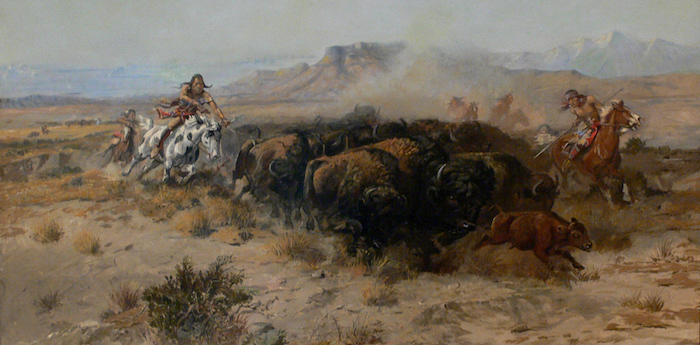
When we think about hunting large numbers of bison, the technique many folks think of is the ‘surround’. Mounted hunters surrounded the herd, forcing the animals to mill about, and fired into the throng. The ‘surround’ doesn’t require the hunters to be mounted, but boy does that make the hunt easier and safer. Bison are big. And they’re dangerous! A rider is better able to avoid being trampled and killed than a hunter afoot.
But for most of the history of North American bison hunting, there were no horses. Mounts were not widespread among the Plains nations until the late 17th and early 18th centuries. So how did hunters kill bison in large numbers before the horse?
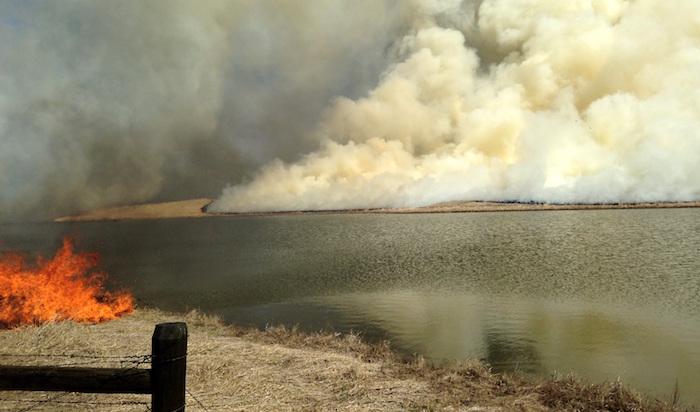
One way was with fire. Dry prairie grass is easy to set alight. It produces a bright orange flame and enormous quantities of white-gray smoke. By setting fire to grass on three sides of the herd, hunters could spook the animals and drive them towards the only opening, where other hunters lay in ambush to shoot the bison as they passed.
At your table, the villains might use this technique to catch the PCs in a stampede. The thundering herd and crackling wildfire (both grave dangers in themselves!) funnel the PCs towards the ambush waiting at the open end. Surviving the stampede may use up some of the party’s resources (fate points, healing potions, etc.), making the ambush a more tense fight. Alternately, the PCs might be caught by accident in an actual hunt using this technique. If they are, they’ll have to survive the stampede and find a way to avoid becoming collateral damage at the end.
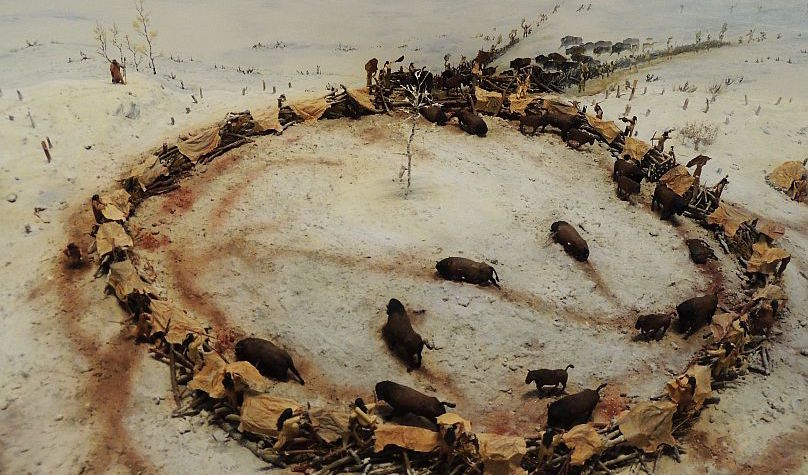
A variation on the above was driving bison towards a ‘buffalo pound’: a corral of loose wooden fencing, often draped with skins. Two converging lines of fences funneled the bison into the corral’s single opening. Farther from the corral, rock piles and bundles of brush were substituted for fences. All along the lines, members of the tribe stood shouting and waving robes or blankets to keep the bison moving towards the corral. Once the animals arrived, they could be shot by the hundreds. Corralling required considerable set-up, and sometimes hunters had to start grass fires to get the herd moving in the right direction.
This tactic requires some modification at the table. Players are smarter than bison (usually), and they will see the trap coming. They need reasons not to turn around or vault the fence. The trick is making clear those reasons are in-universe ones: that the bad guys have thought their trap through carefully, and anticipated possible avenues of escape. The PCs may not be able to turn around because of an onrushing threat: a tsunami, bad guys chasing them on motorcycles, or even a stampeding herd of bison. Discouraging the PCs from metaphorically vaulting the fence and leaving the course is a little trickier. Maybe the area outside the course is even more dangerous: guarded by snipers, terrible monsters, or magical energy storms. Maybe the course is the fastest route away from the onrushing threat, and leaving it ensures you’ll be overtaken by your pursuers.
Then (and this is the really exciting part) once you’ve established that the safest immediate course is to sail blithely into a certain ambush, encourage your players to find a different option. That turns the scene from a march to inevitable oblivion into a high-stakes puzzle. I wouldn’t recommend intentionally building a flaw into the bad guys’ trap. But I’d refrain from making the guard rails too strong. That way, the players can find their own solution without your help, and everyone will have more fun as a result.
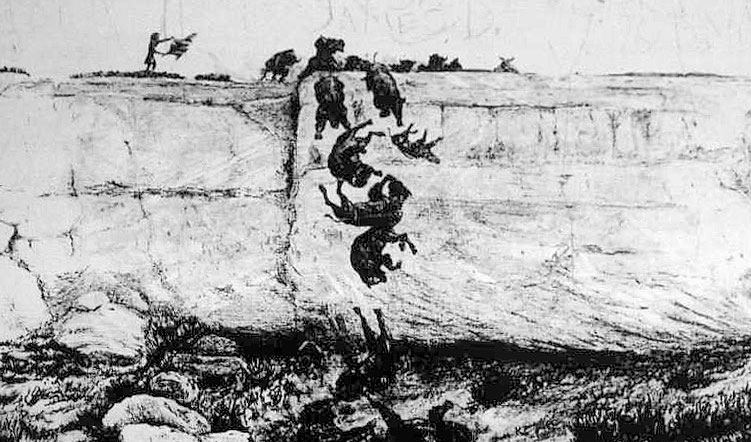
Finally, we have the ‘buffalo jump’. Any of the above techniques might be used to get the herd moving in the right direction, but the destination is a cliff. The hunters stampede the animals over the edge by the hundreds, while their fellows wait below to finish off the dazed and dying.
Getting the herd moving in the right direction required careful coordination – particularly to keep from spooking the animals too soon. If the wind shifted and the bison scented the hunters, the animals might move off. They usually didn’t have to move far to unknowingly arrive somewhere their escape route wouldn’t take them over a cliff.
The flat terrain of much of the Great Plains meant that generations of folks used the same buffalo jumps. The base of the cliff at the Ulm Pishkun site in Montana is a bed of bones four yards deep in places.
Using a buffalo jump at your table is pretty self explanatory. Use any of the above techniques, but replace the ambush or buffalo pound with a cliff! Easy peasy.
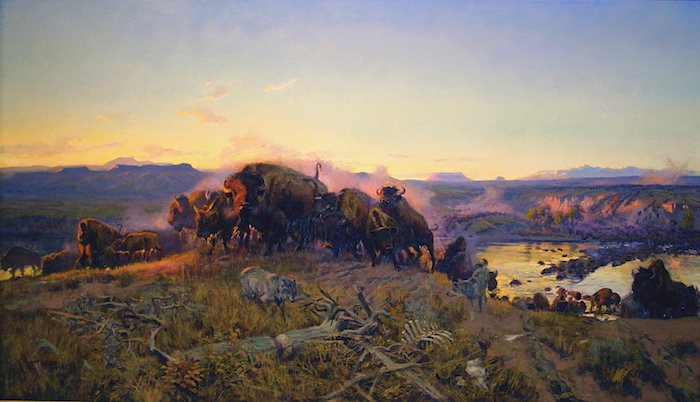
The tactics as given will need to be adapted for high-tech settings. A line of flaming brush isn’t much of an obstacle to a space marine in power armor. But a trench full of burning jet fuel might be. And a line of burning magnesium is a threat to damn near anything. The ‘surround’ works great with helicopters or guys with jetpacks. And while a buffalo jump isn’t a threat to a PC with rocket boots, a whirling vortex of chaos energy sure is.
These hunts also had a religious component, but I’d counsel against using that in your games. The hunting tactics are just that – tactics – and they transcend culture. The Scandinavian Sami people (Lapps) used similar techniques to hunt reindeer. But the sacred rituals themselves would be inappropriate to port over, for the same reason that you might bring tactics from the Battle of Crécy (1346) to the Forgotten Realms, but you wouldn’t bring with them the tradition of receiving the Eucharist before battle.
–
Source:
Indians of the Plains by Robert H. Lowie (1954)
Robert Lowie (1883-1957) was one of the two greatest scholars of the Plains nations in his day. He was also a product of his time, and has some assumptions about Native culture that don’t quite fly in the year 2018. But – and this is very important – he was able to do his research by talking to people who had actually lived as nomads on the open prairie as adults. That’s something no modern historian of the Plains nations can claim. You have to take his conclusions with a grain of salt, and some of his biases may have crept into the above against my best intentions. But his sources and perspective make him a very interesting read.






